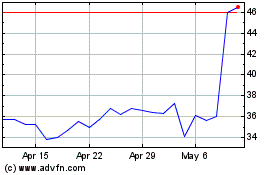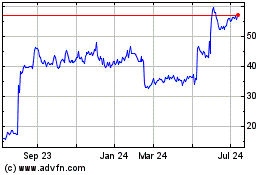Reports that some banks have dropped out of the debt financing
for the rumored EUR25 billion leveraged buyout of Spanish
infrastructure group Abertis (ABE.MC) have underscored why
widespread LBO chatter from earlier in the year has hasn't yet
reached fever pitch.
LBO talk grew in March but has since diminished with increased
market volatility, leaving some market participants speculating
there is now more likelihood of strategic mergers and
acquisitions.
"The LBO screens keep coming around, and at any given time you
have companies that meet the criteria, but there is more wishful
thinking than anything," said Marty Fridson, global credit
strategist at BNP Paribas Asset Management.
Concern about the mounting debt of some European governments and
the potential effect that may have on banks owning that debt have
"put a damper on things, so whatever prospects were there were
dimmed by the upsurge in sovereign risk concerns," Fridson
added.
Financial sponsors are looking at LBO deals, but banks are being
pulled in two directions--risk appetite is recovering, with
shareholders demanding better returns at the same time regulators
are requiring banks to hold more capital against their assets. That
means they either have to lend at a slower pace or be more
disciplined about putting capital to work, favoring LBOs, where
fees are greater, over corporate financing.
Many banks have had trouble tapping debt markets themselves, let
alone to finance LBOs, said Olivia Frieser, a BNP credit analyst in
London covering European banks. "The market's been very difficult
or almost closed for about a month now, so it's not as easy or
obvious now," she said.
J.P. Morgan just lowered its forecast for second- and
third-quarter U.S. GDP to 3.2% and 3%, respectively, from 4%
previously in each case.
A spokesman for Abertis declined to comment, and representatives
of each member of the rumored buyout consortium--CVC Capital
Partners, Actividades de Construccion y Servicios SA (ACS.MC) and
Criteria, the investment arm of the Spanish savings bank La
Caixa--didn't return calls. The debt portion of the financing has
reportedly been cut to EUR5 billion from EUR8 billion, leaving the
sponsors to write a larger equity check.
Fidelity National Information Services (FIS) had been an LBO
target, but after those talks broke down, it came to market Tuesday
with $1.2 billion in new bonds and got loan to help fund part of a
$2.5 billion stock buyback and refinance debt from its acquisition
of Metavante Technologies (MV).
While not yet a trend, some point to that as a sign that
companies will increasingly find LBO alternatives on their own.
"There were lots of companies wondering after the 2006 and 2007
[LBO boom] why they didn't just lever up and do it themselves,"
said Adam Cohen, founder of Covenant Review, a research firm
focused on corporate bond covenants.
In mid-March, LBO rumors were fueled by pressure on
private-equity firms to put cash to work, a narrowing of credit
spreads, an increased demand for high-yield debt, and weakening
covenants. Existing debt was also trading at depressed prices, so
holders were agreeing to participate in tenders and exchanges more
readily, said Brian Yelvington, director of fixed-income research
at Knight Capital.
At the time, Barclays Capital suggested that possible LBO
targets would have had market capitalizations of no more than $7
billion based on equity contributions of 35% to 40% of the total
enterprise value and the institutional loan market not being able
to digest more than $2.5 billion in new debt. One LBO screen that
appeared on financial news website ZeroHedge.com listed 30
unconfirmed targets, and their average market cap was $6.7
billion.
Now the consensus is more like $10 billion, said Cohen, but
valuations don't seem to be attractive enough relative to
companies' earnings prospects to make LBOs a foregone
conclusion.
There have been $80.8 billion in global buyouts this year,
according to data provider Dealogic, on par with the $81.4 billion
for all of 2009 but far less than the $190.9 billion for 2008. The
largest of these was an all-cash bid in May for Extended Stay
Hotels, valued at $3.925 billion. Private equity exits in June via
trade sales to other strategic buyers or other financial sponsors
were the highest since June 2008.
When a company becomes the subject of LBO rumors, traders can
profit from the news as the risk premium, or spread, on the
acquiring company's bonds widen and the cost to insure its debt
increases because of the anticipated increased indebtedness;
meanwhile, the target company's spreads tighten.
Risk premiums are the extra return investors demand over
super-safe Treasurys to compensate for the additional default risk
of corporate debt. The premiums grow as the value of the underlying
securities falls.
Examples of this include Kraft Foods Inc.'s (KFT) purchase of
Cadbury Plc (CBRY.LN) and the rumored buyout of trash bags maker
Pactiv Corp (PAC). Credit default swaps to insure debt issued by
Kraft and Cadbury were trading around the same level in late
January, around 76 basis points--equivalent to $76,000 per year to
insure $10 million, according to CMA DataVision. But spreads on
both began to diverge as the acquisition progressed and was
confirmed.
Similarly, CDS spreads on Pactiv widened to 301 basis points
from 141.6 between May 14 and May 17 after a report in The Wall
Street Journal about Apollo Management and other potential
acquirers circling the company. Other names on LBO screens are US
Cellular (USM), Autozone (AZO), Supervalu (SVU), Lexmark (LXK) and
Western Union (WU).
Sponsors may begin to feel more confident about deals with
improved macroeconomic data and a better-than-expected
second-quarter earnings season. But uncertainty about the global
economic recovery and their ability to raise the necessary capital
has made it harder to complete deals, at least for now. Even
traditional M&A activity has slowed as companies choose a more
defensive route of paying down debt.
Some 46% of U.S. high-yield issuance proceeds have been used to
repay outstanding debt so far in 2010, compared with 36% in 2009,
according to Knight Research. Meanwhile, 19% of issue proceeds have
been used to pay down loans, compared with 25% in 2009.
-By Katy Burne, Dow Jones Newswires; 212-416-3084;
katy.burne@dowjones.com
US Cellular (NYSE:USM)
Historical Stock Chart
From Aug 2024 to Sep 2024

US Cellular (NYSE:USM)
Historical Stock Chart
From Sep 2023 to Sep 2024
